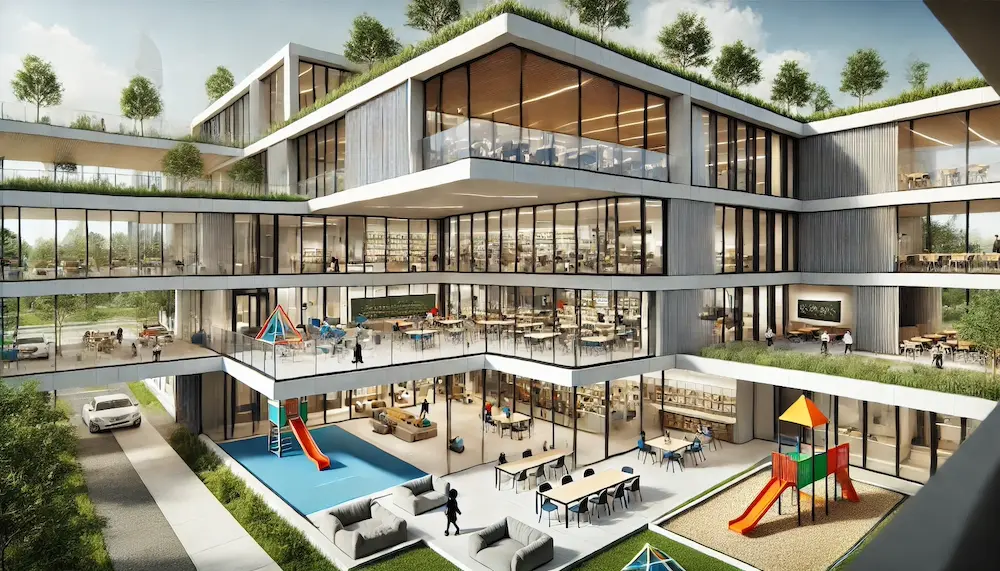Modernist architecture has significantly influenced the design of elementary schools, emphasizing functionality, simplicity, and the integration of form and purpose.
Introduction to Modernist Elementary School Architecture
Modernist architecture emerged in the early 20th century, focusing on the idea that design should be free from unnecessary ornamentation, highlighting function and the honest use of materials. In the context of elementary schools, this translated into buildings that were not only aesthetically pleasing but also conducive to learning, health, and well-being.
History and Origins of Modernist Elementary School Architecture
The application of modernist principles in school design gained momentum post-World War II, addressing the need for new educational facilities due to population growth and urbanization. Architects like Paul Rudolph and Richard Neutra were pioneers in this movement, creating schools that departed from traditional designs to embrace open floor plans, natural lighting, and innovative materials. For instance, Paul Rudolph’s design of the J. W. Chorley Elementary School in Middletown, New York, showcased an open floor plan and extensive use of natural light, embodying modernist ideals.
Key Features of Modernist Elementary School Architecture
- Open Floor Plans: Encouraging flexibility and adaptability in educational spaces.
- Extensive Use of Glass: Maximizing natural light to create bright and inviting learning environments.
- Functional Design: Prioritizing the practical use of space to enhance educational outcomes.
- Integration with Nature: Designing spaces that harmonize with their surroundings, often incorporating outdoor learning areas.
- Innovative Materials: Utilizing materials like steel, concrete, and glass to achieve both durability and aesthetic appeal.
Applications of Modernist Principles in Elementary Schools
Modernist principles have been applied in various elementary schools worldwide, resulting in designs that support contemporary educational philosophies. For example, the Crow Island School in Winnetka, Illinois, designed by Eliel and Eero Saarinen in collaboration with Perkins, Wheeler & Will, features classroom wings that open to individual courtyards, promoting a connection with nature and providing flexible learning spaces.
Considerations When Choosing Modernist Design for Elementary Schools
- Community Needs: Understanding the specific requirements and cultural context of the student population.
- Sustainability: Incorporating eco-friendly materials and energy-efficient systems to create sustainable learning environments.
- Flexibility: Designing spaces that can adapt to evolving educational practices and technologies.
- Budget Constraints: Balancing aesthetic aspirations with financial realities to achieve cost-effective solutions.
Conclusion
Modernist architecture has profoundly impacted the design of elementary schools, creating environments that are functional, flexible, and conducive to learning. By focusing on simplicity, the honest use of materials, and the integration of indoor and outdoor spaces, modernist designs have set a precedent for educational facilities that prioritize both form and function.
